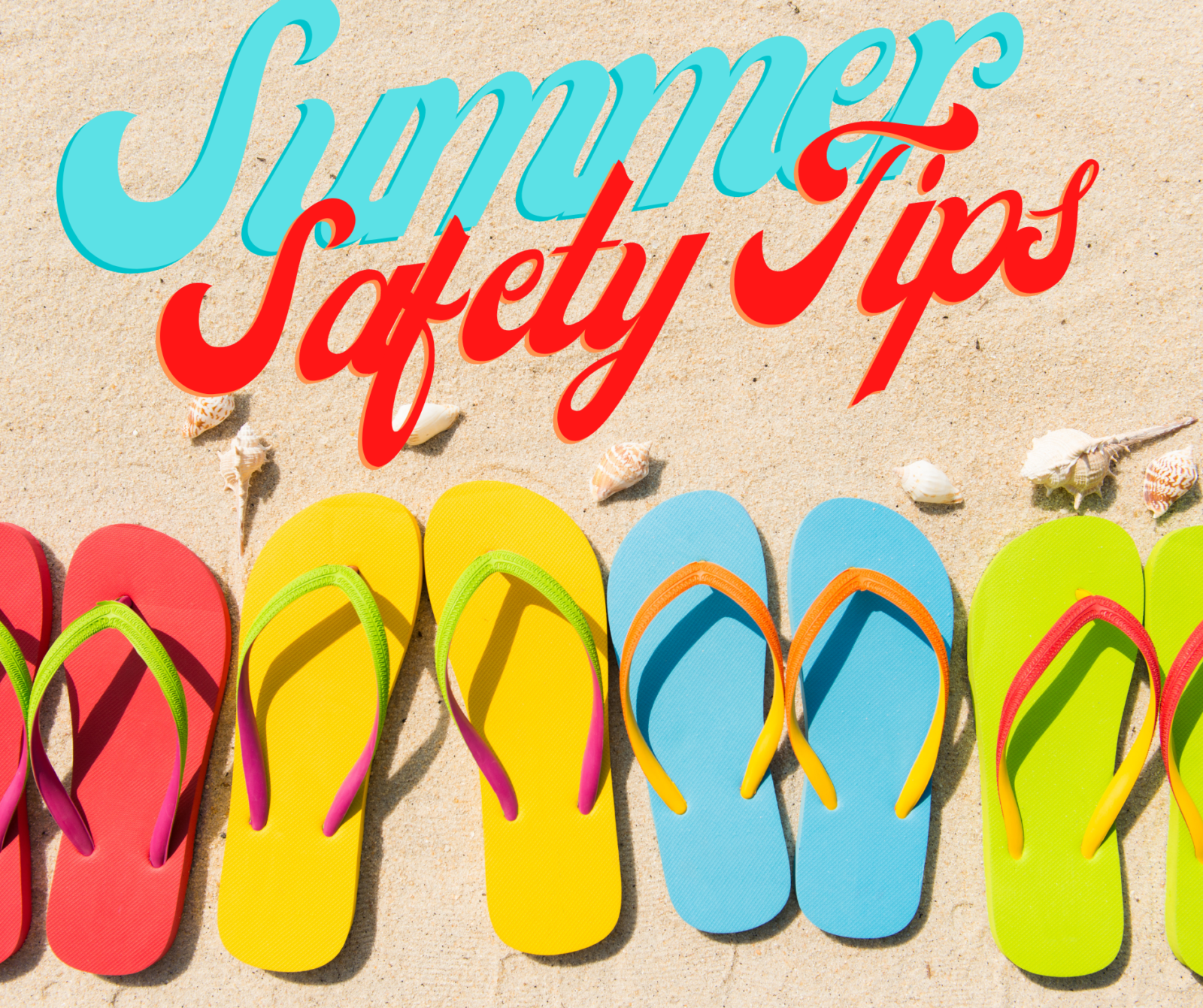The job of protecting kids most often falls to parents and caregivers, and it is up to them to familiarize themselves with safety risks in and around their homes and communities. Once you know the risks, you can take steps to plan for safety.
Beat the Heat
Anybody can be at risk for a heat-related illness. Follow these summer safety tips, like taking extra breaks and drinking lots of water.
Bug Safety
Mosquitoes can cause a number of illnesses, including Zika Virus and West Nile Virus. Learn what you can do to protect yourself at work and play.
Playgrounds
Emergency departments see more than 20,000 children ages 14 and younger for playground-related traumatic brain injury each year. Playgrounds are a place for fun and a place for skinned knees. Nearly 80% of playground injuries are caused by falls. Parents can take the hurt out of the equation by familiarizing themselves with safety risks and watching for potential hazards.
Fireworks
Summer is synonymous with barbecues, parades, fireworks displays – and plenty of visits to emergency rooms, especially during July.
Water Safety
The younger the child, the greater the risk. Many are aware of the importance of safety around pools and at the beach. Parents also need to supervise their children near bathtubs. Most drowning or near-drowning incidents happen when a child falls into a pool or is left alone in the bathtub. Distractions make for tragedies, and the younger the child, the greater the risk.
Bicycling
Bicyclists must take extra precautions when they ride. They often share the road with vehicles, but injuries can happen even on a bike path.
Skateboarding
Everyone falls, but there’s a right way to do it. In 2017, 98,486 people were treated in hospital emergency rooms after being injured skateboarding.
Boating
Most boating experiences are positive. But joyful times quickly can turn deadly if boaters are not vigilant about safety – at all times.
Pedestrian Safety
Cell phone distracted walking is a huge problem, and rarely are we more vulnerable than when walking, crossing streets and negotiating traffic.
Taken from Summer Safety – National Safety Council (nsc.org)
Teen Driving
A teen’s biggest safety threat is sitting in the driveway. Half of all teens will be in a car crash before graduating from high school. Teen drivers who continue to practice with their parents increase their chances of avoiding a crash.
Child Passenger Safety
Car crashes are the leading cause of death for kids and young adults from ages 1-24. Properly securing kids in car seats, booster seats and seat belts can protect them in the event of a crash. NSC offers tools and tips on keeping your children safe on the road.
Childproofing
Learn the highest risk areas for unintentional injury and death in and around your home. Take steps to “childproof” your home and be sure to extend your efforts beyond toddlers. Develop a home safety plan, and practice different ways to get out of your home. An ounce of prevention is worth a pound of cure.
Lead Poisoning
Millions of kids are exposed to high levels of lead every day. Children under the age of 6 are especially vulnerable because their growing bodies absorb more lead than adults and their brains and nervous systems are more sensitive to the damaging effects of lead. Learn what you can do to prevent lead poisoning.
Risks of Button Batteries
Young children have a tendency to put things in their mouths. Every parent knows this, but parents don’t always recognize the hidden dangers lurking inside seemingly harmless items, such as remote control devices and keyless remote door openers for vehicles. Button batteries if swallowed can cause serious injury or death.
Staying Safe at School
As summer draws to a close and children start heading back to school, family life can get pretty hectic. It’s important to remember – and share with your children – some key tips that will help keep them safe and healthy throughout the school year.
Concussions
Every three minutes, a child in the U.S. is treated for a sports-related concussion. Learn how to identify concussion symptoms and steps to keep kids safer on the playing field.
Children and Medicines
Dangerous poisons are lurking in your medicine cabinet. Prescription and over-the-counter medications can be deadly, especially for children. Store medicine up and away from small children. Talk with older kids about the danger of using medications in unintended ways.
Staying Safe Outdoors
NSC offers a wide range of tips to help you and your family stay safe outdoors. Whether the weather is warm or cold, you don’t want to put an end to the fun because of an injury.
Window Safety
More than 3,000 children are injured seriously enough in falls out of windows to require medical attention every year. One child dies every month from window cord strangulation. Learn about risks children face around windows, and also how windows are vital to survival as emergency escape routes.

